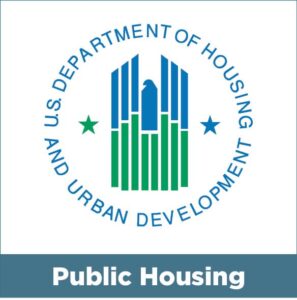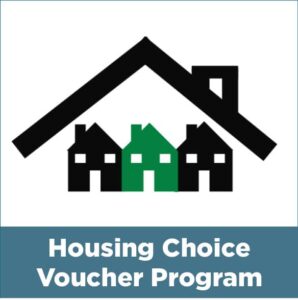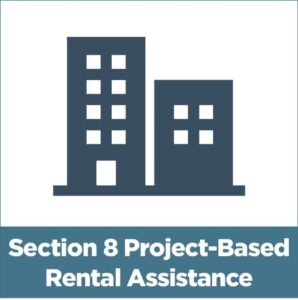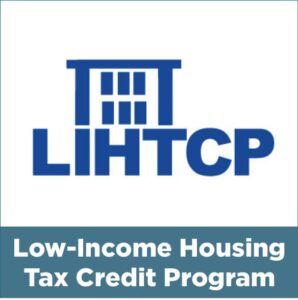1.2 Terminology
Affordable Housing Terminology
“Affordable housing” can mean different things to different people. Some people assume it means high-rise public housing in a dense urban setting. Others assume it is a reference to Section 8 Housing Choice Vouchers, which are subsidies that help families afford the costs of rental housing they find in the private market. These overly narrow definitions fail to consider the many different types of affordable housing, including housing built without government subsidies.
Given these stereotypes, some practitioners choose to avoid the term “affordable housing” altogether in their public discourse and use alternatives such as “affordable homes” or “homes people can afford.” We’ll return to how to talk effectively about affordable housing later in Section 5 of this training.
Types of Affordable Housing
In the meantime, let’s review some terms people use to describe different forms of affordable housing. Hover over each to review their definitions.
Dedicated Affordable Housing
Subsidized Housing
Income-restricted Housing
Public Housing
Deed-restricted Units
Low-income Housing
There are far fewer terms used to describe market affordable housing. One term sometimes used as a synonym for market affordable housing is “naturally occurring affordable housing.”
Naturally Occurring Affordable Housing
Types of Housing Subsidy Programs
In addition to knowing the various terms for forms of affordable housing, it is helpful to know the names of the many different government programs that help make housing affordable. We define the most common types below to build familiarity with the terminology.

Public Housing: Housing developments owned by a public housing agency and funded by the federal or state government. Existing federal public housing units provided affordable housing to approximately 850,000 households around the U.S. in 2021; there are some additional state-funded public housing units as well. Few new public housing developments are being built today, although some are being replaced with new buildings.

Housing Choice Vouchers: A federally funded housing subsidy program (also known as the Section 8 voucher program) that helps very low-income households afford private market rent. As of 2021, approximately 2.3 million households received housing subsidies through the Housing Choice Voucher program.

Section 8 Project-based Rental Assistance: A federally funded housing program to assist low-income households with the cost of renting units in privately owned and managed properties. Unlike Housing Choice Vouchers (HCV), the Section 8 Project-based Rental Assistance program is tied to specific properties. The program assists approximately 1.2 million households.

Low-income Housing Tax Credits (LIHTC): A program created through the Tax Reform Act of 1986, which has become a vital resource for creating affordable housing. The program provides tax credits that developers can convert into equity to help them purchase, construct, and rehabilitate affordable rental housing for low- and moderate-income tenants. From 1987 to 2020, 3.44 million housing units were created through the LIHTC program.
Test Your Knowledge
Ways to Measure Housing Affordability
Now, let’s turn to some of the terms that practitioners and policymakers use to describe who is eligible for housing subsidy programs and to measure whether a household’s housing costs are affordable.
Area Median Income (AMI)
What is it? In defining who is eligible for federal housing subsidies, the U.S. Department of Housing and Urban Development (HUD) uses a concept called Area Median Income (AMI). This is an estimate of the median family income for a particular region (either a metropolitan area or a non-metropolitan county), with adjustments for family size and a number of other factors. HUD then reports on certain percentages of the AMI (30%, 50%, and 80%), as adjusted for family size. You can look up the income limits for your region on HUD’s website.
Why is it important? Typical incomes vary from one region to the next. The AMI allows federal and state policymakers to tailor the eligibility levels for their programs to the specific incomes of a particular region. For example, federal law specifies that many housing assistance programs are available only to households with incomes at or below 80 percent of the AMI. The exact income level that constitutes 80 percent of AMI will vary from region to region, based on HUD’s calculations. HUD programs use lower percentages of AMI to target rental assistance to lower-income households. For example, three-fourths of newly available Housing Choice Vouchers – a federal rental assistance program – must be provided to families with incomes at or below 30 percent of AMI.
Local officials can use AMI in the same way to define eligibility for a locally-initiated housing program – for example, setting eligibility at 50 percent or 100 percent of the AMI. This ensures that the exact income figure will be adjusted automatically each year when HUD updates the AMI estimates. Since AMI is defined for the whole metropolitan area or county, it will just be important to consider how well the standard percentages of AMI work when applied to smaller geographic areas, such as towns or neighborhoods. If needed, you can adjust the percentages of AMI targeted by a local program up or down to ensure you are reaching the target population.
Housing Cost Burden
What is it? Housing cost burden is a metric commonly used by the federal government and others to determine who has a housing affordability problem. Housing cost burden is measured as the share of a household’s gross income spent on housing costs (including utilities). A household is considered cost-burdened when it spends more than 30 percent of its income on housing costs and severely cost-burdened when it spends more than 50 percent on housing costs.
I. Create and preserve dedicated affordable housing units |
|
| Logic/mechanism: Housing trust funds and other local revenue sources provide a flexible funding source to address local priorities, including affordable homeownership. Public programs can create permanent affordable homeownership opportunities by using subsidies to bring homeownership costs down to affordable levels and by setting conditions for the resale of participating properties to future homebuyers. Transferring ownership of dedicated affordable rental properties to organizations that are committed to maintaining affordability—whether private non-profits or tenants’ organizations—helps to ensure that current residents have the option to stay in their homes and that future homeownership opportunities are extended equitably. Leveraging partnerships with employers to provide housing assistance to employees can make it more affordable for households to live closer to work, supporting economic development and stability at both the community and household levels. | Specific policies: Set aside a portion of the proceeds from the local housing trust fund or dedicated revenue sources for activities that support the development of homes that sell at affordable prices. Use capital subsidies and operating subsidies to lower the cost of creating homes that will be sold at affordable prices. Create housing that stays affordable in the long term with strategies such as community land trusts, deed-restricted homeownership, and limited equity cooperatives, all of which restrict the price at which affordable housing can be resold and frequently provide counseling and other services to support new homeowners. Adopt a right of first refusal policy that gives tenants or mission-oriented buyers priority consideration for purchasing a property when the owner of a subsidized rental property decides to stop participating in the subsidy program. Develop or support employer-assisted housing programs, which provide a channel for employers to help their employees with housing costs. |
II. Promote affordability by aligning supply with market and neighborhood housing conditions |
|
| Logic/mechanism: Local zoning provisions that constrain land use to single-family housing, particularly in high-opportunity neighborhoods, can decrease housing affordability and restrict access to homeownership. Increasing the availability of diverse types of housing can expand housing affordability and create more inclusive neighborhoods. | Specific policies: Revise the zoning code to facilitate the development of diverse housing types that provide more affordable homeownership opportunities than single-family homes, including missing middle housing and manufactured housing. |
III. Help households access and afford private-market homes |
|
| Logic/mechanism: Racial wealth gaps are a major contributor to disparities in homeownership rates. Many families can afford monthly mortgage payments but lack the savings to make heavy lump-sum down payments. Financial assistance can help address the barriers created by racial wealth gaps. Both prospective and existing homeowners of color face discrimination, whether in the housing search process or in home lending and appraisals. Local jurisdictions can work to prevent discrimination and enforce existing protections. First-time homeowners may face complex barriers to homeownership. Lack of credit is a significant barrier to homeownership, but cities can work to increase access to credit-building opportunities and support alternative pathways to homeownership. Coupled with financial assistance, housing education and counseling can make homeownership more accessible. | Specific policies: Provide down payment and closing cost assistance for low- and moderate-income households. Jurisdictions and nonprofits can also offer mortgage programs to assist home buyers, such as subsidized mortgages with lower interest rates and shared appreciation mortgages that put off repayment until the homeowner resells or refinances the home. Local governments and nonprofits can also help home buyers who have difficulty getting a loan by offering small balance mortgages for low- value homes. Strengthen local capacity for effective enforcement of fair housing laws, including support for legal assistance for victims of discrimination. Conduct or support fair housing education for real estate professionals and consumers in local markets to ensure that professionals comply with fair housing laws and that homebuyers and homeowners know their rights. Assist prospective homeowners with housing education and counseling to facilitate the home purchasing process. |
IV. Protect against displacement and poor housing conditions |
|
| Logic/mechanism: Households of color are disproportionately at risk of foreclosure. Financial, legal, and other forms of assistance can help to prevent homeownership losses that exacerbate racial homeownership gaps. The expense shocks of home repairs can jeopardize housing stability. Providing assistance with home maintenance fortifies housing stability and prevents deterioration and blight within the community. | Specific policies: Target legal and financial assistance, including foreclosure prevention programs and property tax relief for income-qualified homeowners, to households struggling to pay their mortgages. Cities can leverage federal grants and local funds to provide homeowners with rehabilitation and home repair assistance. Well-designed programs have the potential to mitigate the displacement of low-income households, predominantly those of color, who cannot afford unexpected home repair costs. |
Why is it important? The housing cost burden measure provides a ready way of quantifying the extent of the housing affordability challenges experienced in your community and allows you to compare the burden experienced by different categories of households — for example, households of different incomes, races, and ethnicities.
Hover over each of the tiles below to see how much these employees make, according to the US Census Bureau, and how much they can afford to pay for housing.